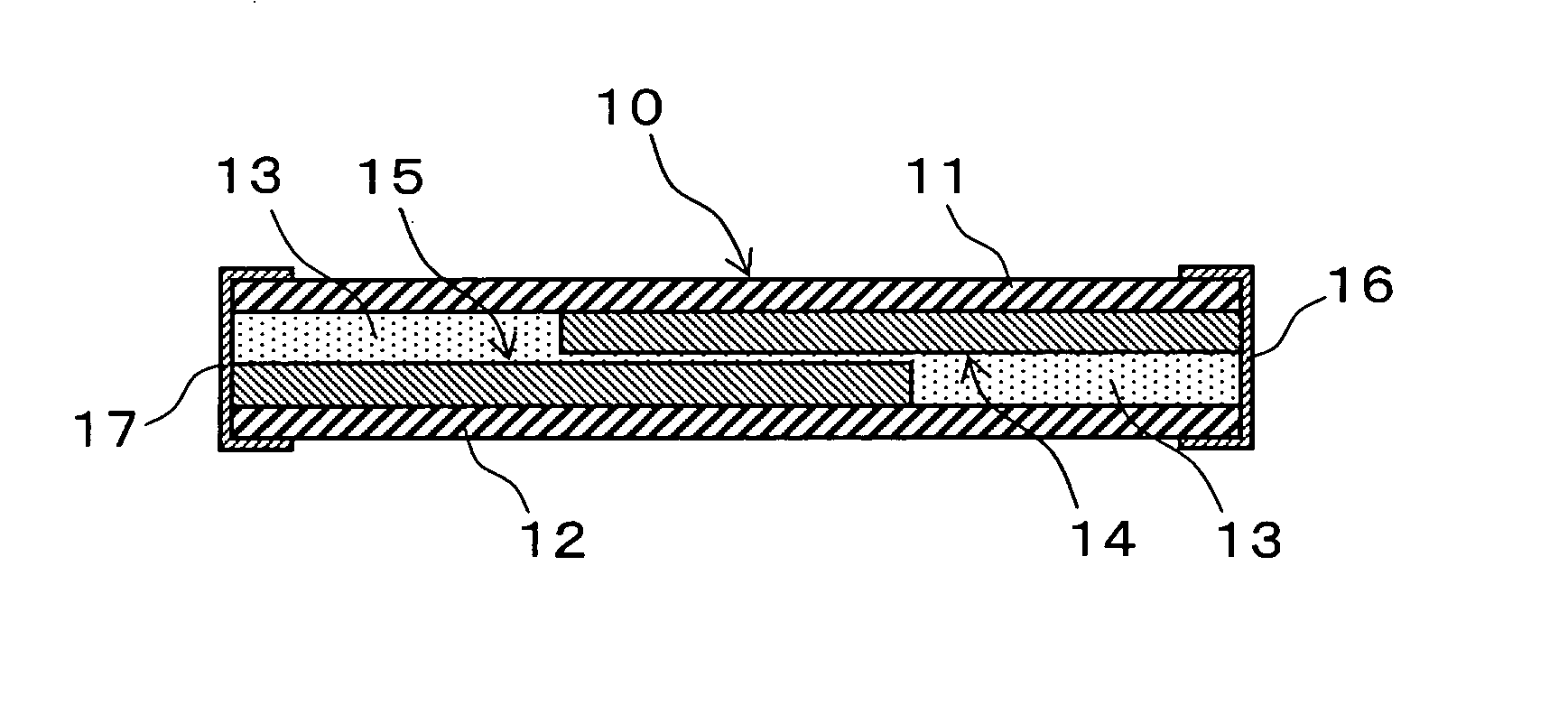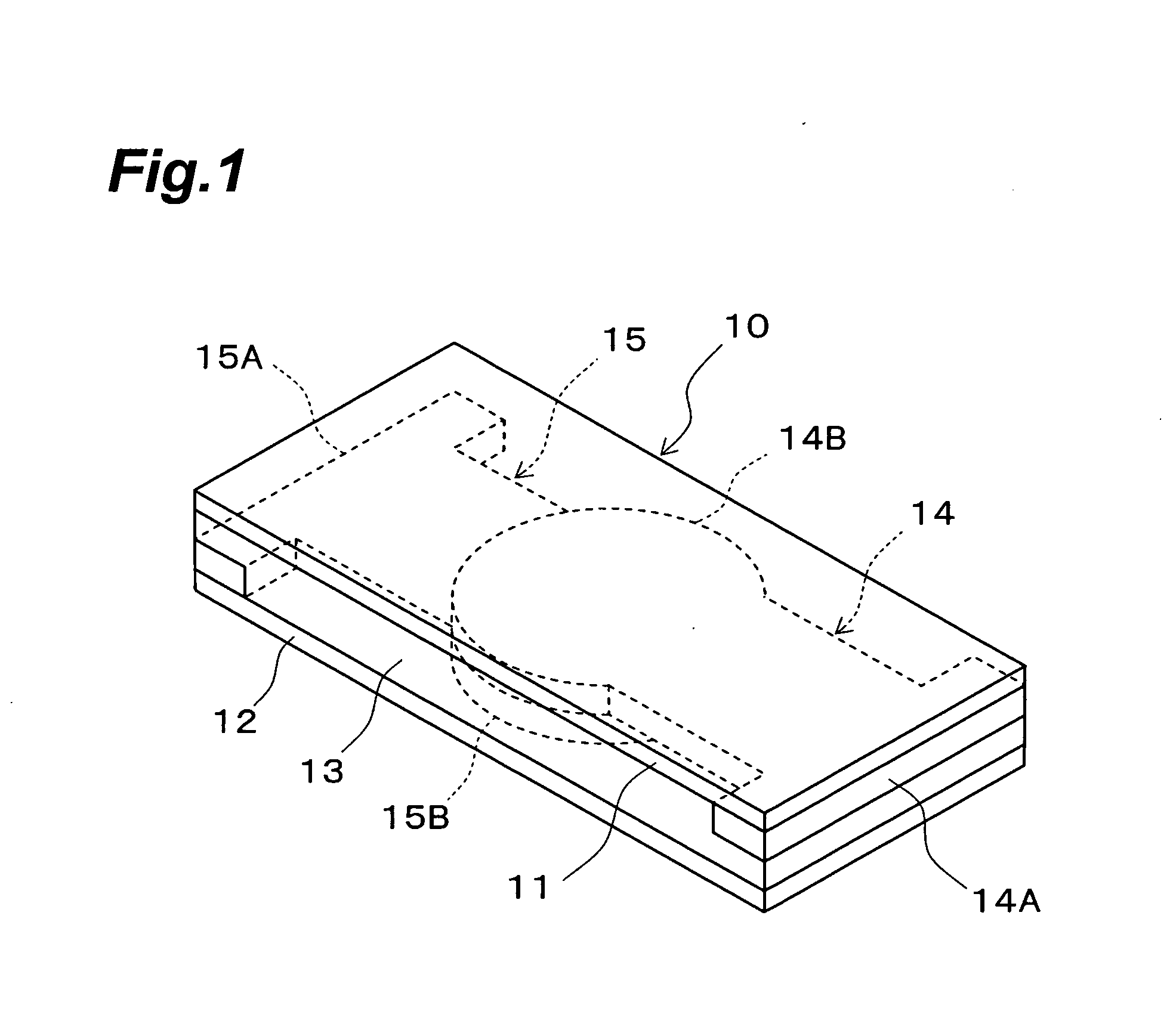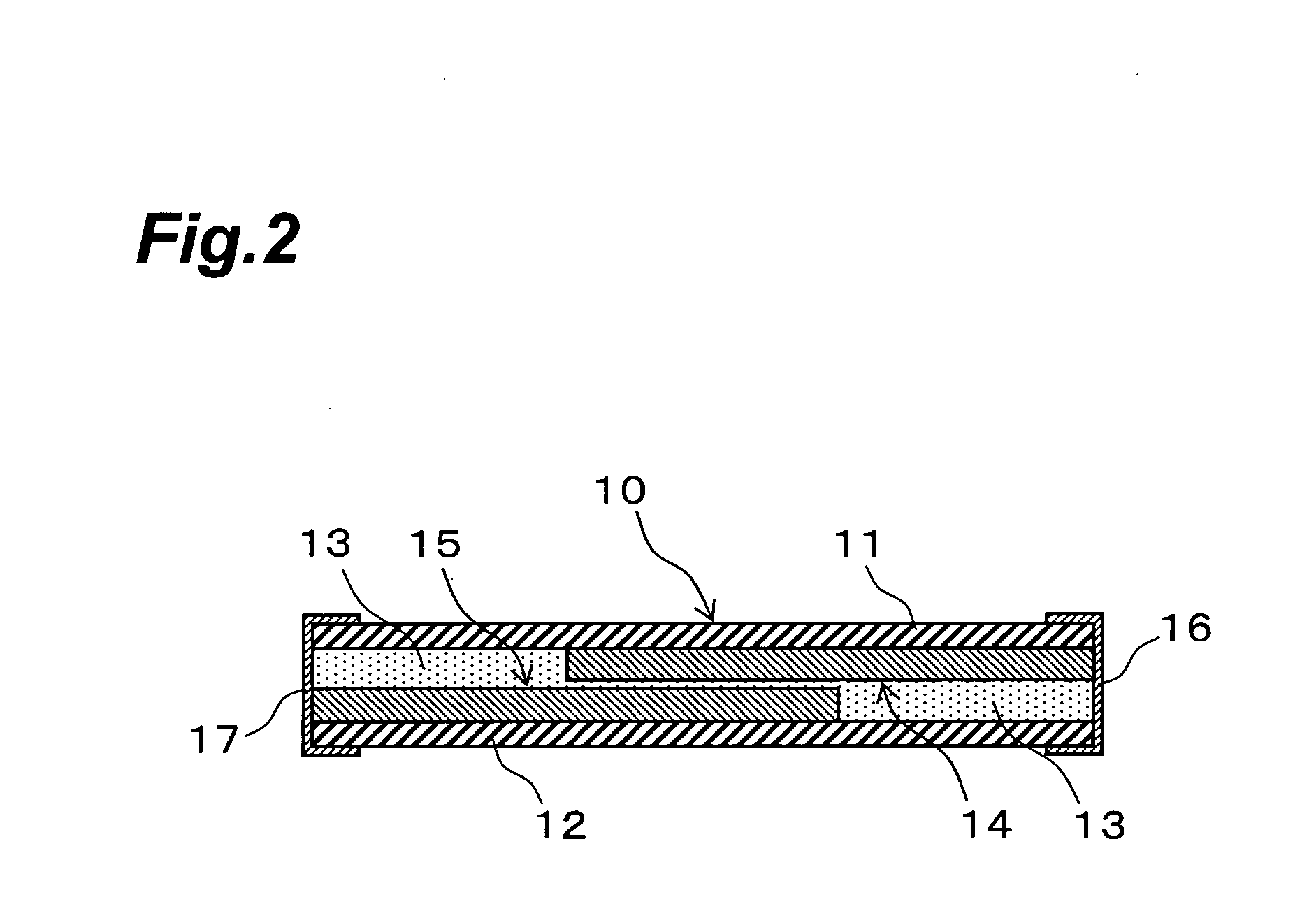Thermistor
a technology of thermistor and resistance, which is applied in the direction of resistors, varistors, current responsive resistors, etc., can solve the problems of difficulty in obtaining ptc characteristics, low initial resistance, so as to achieve easy large change in resistance, increase heat resistance in reflow step, and stable low initial resistance value
- Summary
- Abstract
- Description
- Claims
- Application Information
AI Technical Summary
Benefits of technology
Problems solved by technology
Method used
Image
Examples
example 1
[0057] As Example 1, a thermistor having a structure illustrated in FIGS. 1 and 2 was manufactured, and the initial resistance (mΩ) at 25° C. between the electrode 16 and electrode 17 thereof, the change in resistance (log 10), the resin glass transition point (° C.) / DMA, and the resistance (mΩ) after reflow at 260° C. were measured.
[0058] The upper substrate 11 and the lower substrate 12 of the thermistor 10 in Example 1 were hot-molded for 2 hours at a temperature of 180° C. in a 3 MPa vacuum press. The matrix resin layer 13 was prepared by blending an epoxy resin (trade name E4080, an epoxy resin with an epoxy equivalent of 167 g, made by Asahi Chemical Industries) and a flexible epoxy resin (trade name E4005, a flexible epoxy resin with an epoxy equivalent of 510 g, made by Asahi Chemical Industries) in a weight ratio of 2 / 1, and then adding an equivalent amount of methyltetrahydrophthalic anhydride (trade name B570, a curing agent with an acid anhydride equivalent of 160 g, ma...
PUM
 Login to View More
Login to View More Abstract
Description
Claims
Application Information
 Login to View More
Login to View More - R&D
- Intellectual Property
- Life Sciences
- Materials
- Tech Scout
- Unparalleled Data Quality
- Higher Quality Content
- 60% Fewer Hallucinations
Browse by: Latest US Patents, China's latest patents, Technical Efficacy Thesaurus, Application Domain, Technology Topic, Popular Technical Reports.
© 2025 PatSnap. All rights reserved.Legal|Privacy policy|Modern Slavery Act Transparency Statement|Sitemap|About US| Contact US: help@patsnap.com



